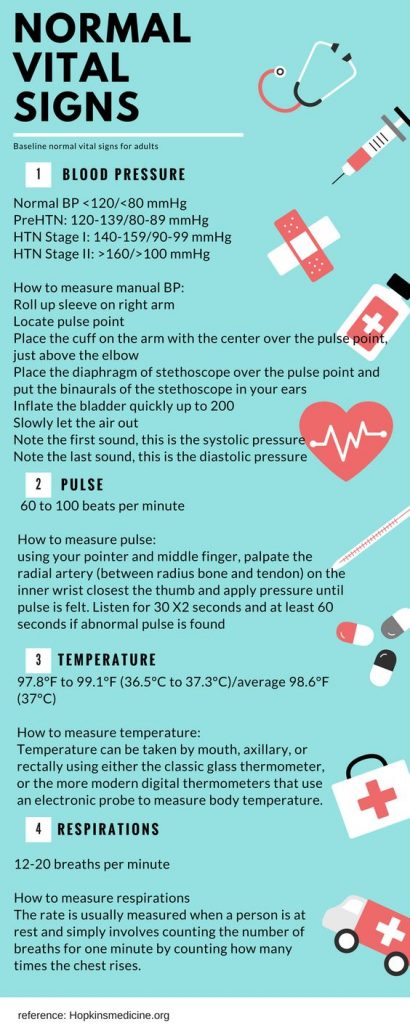26 Mar Does your body functions well?
“Maintaining good health should be the primary focus of everyone” -Sangram Singh
Vitals, also known as Signs of Life. These are simple signs that we also give if your body is in normal condition.
Are your feeling okay?
Have you check your vitals recently? Very basic things you need to do with your body to know more about it.
Body Temperature:
This vary on gender, recent activity, food and fluid consumption, time and if you area women, are you in stage of menstrual cycle. Average adult normal temperature is 36.5 degrees C. Body temperature can be taken with the use of a thermometer. It may be orally, rectally, axillary, by ear and by skin.
Pulse Rate: Also known as heart rate, number of times the heart beats/minute. Taking a pulse rate will measure (a)Heart Rhythm (b)Strength of the pulse. A healthy adult ranges 60 to 100 beats/minute. This may fluctuate and increase with exercise, illness, injury and emotions. Checking pulse can be done by pressing on the arteries which are located close to the surface of the skin. It may be found in side of the neck, inside elbow and wrist.
Respiration Rate: its the number of breaths a person takes per minutes. This simple involves counting number of breaths for one minutes, for counting how many times your chest rises. But this may increase if you have fever, illness and other medical condition. Normal respiration range from 12 – 16 breaths/minute.
Blood Pressure: Its the force of blood pushing against the artery walls during contraction and relaxation of the heart. Every time the heart beats, its pumps blood into arteries resulting in the highest blood pressure. The higher number, or systolic pressure, refers to the pressure inside the artery when the heart contracts and pumps blood through the body. The lower number, or diastolic pressure, refers to the pressure inside the artery when the heart is at rest and is filling with blood. Blood pressure is categorized as normal, elevated, or stage 1 or stage 2 high blood pressure. (a)Normal blood pressure is systolic of less than 120 and diastolic of less than 80 (120/80). (b) Elevated blood pressure is systolic of 120 to 129 and diastolic less than 80. (c) Stage 1 high blood pressure is systolic is 130 to 139 or diastolic between 80 to 89. (d) Stage 2 high blood pressure is when systolic is 140 or higher or the diastolic is 90 or higher.
These informations are just basic vitals that you can also check normally. We added a chart that you can use as a basis too!

Seek help from medical professional if you think your vitals are not normal, so you can get best advice.




No Comments